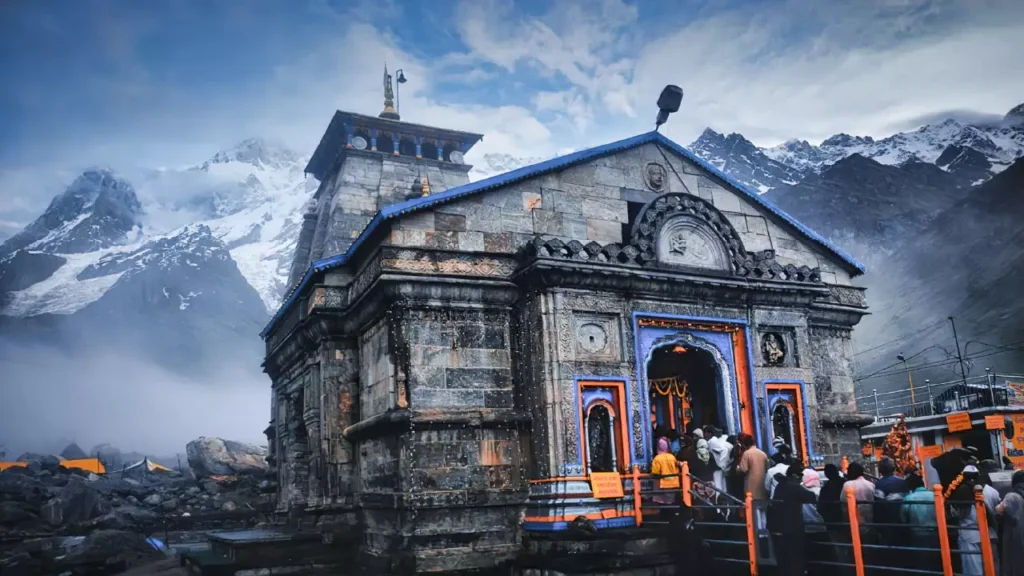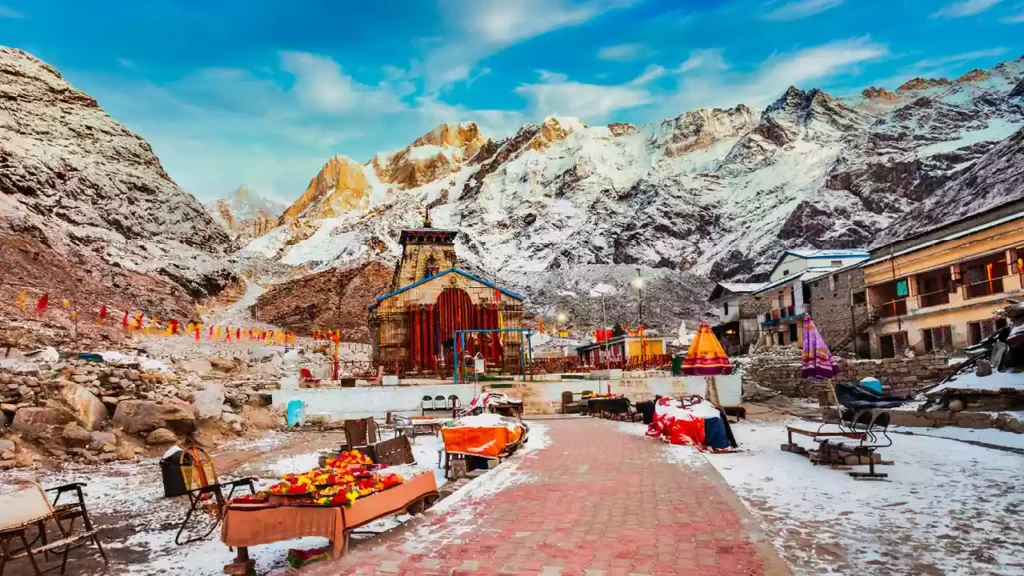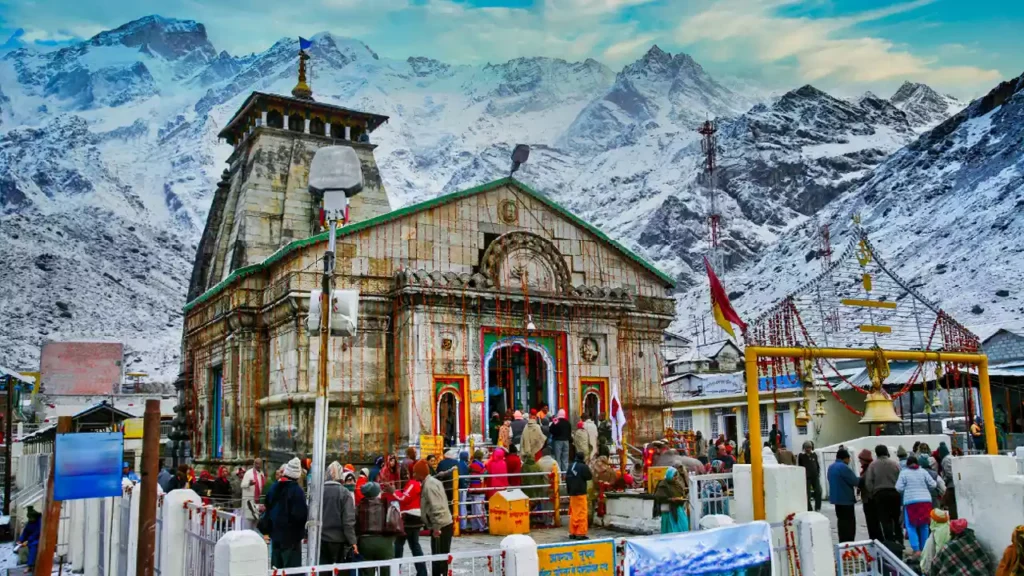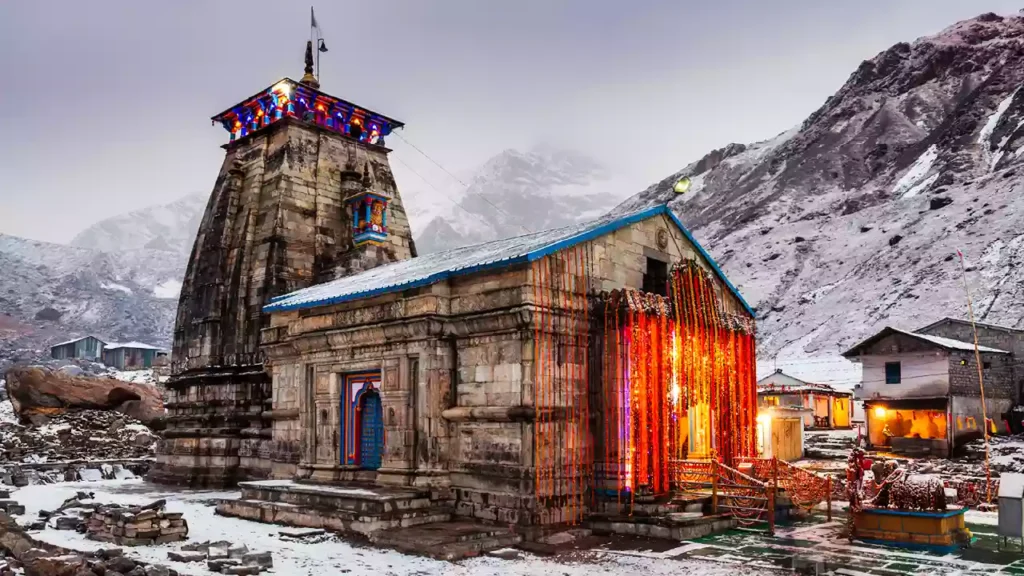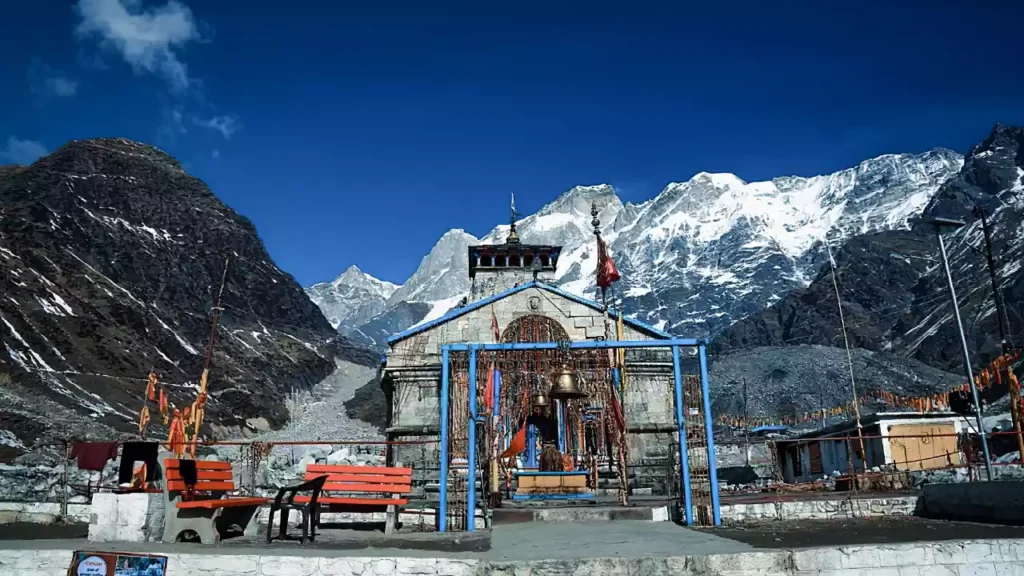Introduction
One of the most prominent and revered Hindu temples in Uttarakhand, India, is the Kedarnath Temple, which is situated on the Garhwal Himalayan Range and is a part of the Chhota Char Dham Yatra. The temple, which is devoted to Lord Shiva and is the highest of the 12 Jyotirlingas, is located at a height of 3,583 metres. Due to its religious significance and sanctity, the Mandakini River flows in front of the Kedarnath Temple, surrounded by steep, snow-covered mountains.
The Pandavas created the first Kedarnath Temple, thought to have been rebuilt by Adi Shankaracharya, from gigantic stone slabs a thousand years ago on a sizable rectangular dais. Lord Shiva, the destroyer and guardian, is known as Kedar. It is one of the most revered temples dedicated to the deity, and it is thought that visiting this sacred area can lead to “Moksha,” or salvation.
Since a trip is required to reach this temple of Lord Shiva from Gaurikund, Kedarnath Temple is also a treat for trekkers. You experience the height of exhilaration due to the magnificent Himalayan views, the pleasant weather, and the unpolluted surroundings. It’s admirable how devoted people are to even catch sight of the lingam. There are many reasons to visit Kedarnath Temple, including its historical history, spiritual significance, and stunning architecture.
History of Kedarnath Temple
The history of Kedarnath Temple is highly intriguing because it is connected to the Mahabharat myths. Following the Battle of Kurukshetra, the Pandavas felt remorse for killing their Kaurava cousins. They pleaded with Lord Shiva to forgive them of their misdeeds, but Lord Shiva was displeased.
To find Shiva, the Pandavas first travelled to Kashi, where they discovered that he was in the Himalayas. They continued towards the Mountains as well, but a displeased Shiva did not want to readily forgive their transgressions. Therefore, he dressed as a buffalo and travelled to Guptakashi. When the Pandavas arrived in Guptakashi, they noticed a strange-looking buffalo. One of the Pandavas, Bheema, grabbed the buffalo’s tail, which caused the animal to fragment in all directions.
It is thought that the Kedarnath Temple was created when its hump fell in Kedarnath. The buffalo’s other body parts fell at Tungnath, Rudranath, Kalpeshwar, and Madhyamaheshwar, among other places. The holy “Panch Kedars” comprises these four locations and Kedarnath. Eventually, after pardoning the Pandavas’ transgressions, Lord Shiva made the decision to live in Kedarnath as a Jyotirlingam.
At Bharat Khand Badrikashrama, it is also thought that Nar and Narayana, two well-known Lord Vishnu incarnations, performed before an earthen Shiv lingam. After being pleased, Lord Shiva appeared in front of them. He asked them to express a wish. Thus, they prayed for the Lord to live there permanently as a Jyotirlingam. The Lord granted their request and became a permanent fixture in the Kedarnath temple.
Trek to Kedarnath
After a 16-kilometre hike from Gaurikund, you can get to Kedarnath. There are horses or ponies available to ascend this arduous journey. Kedarnath was severely damaged by the 2013 flash floods, but efforts are being made to restore it to its former splendour. The route for the Kedarnath walk has recently changed a little. Every few kilometres, the Nehru Institute of Mountaineering has erected sheds where devotees can recuperate throughout this taxing climb.
Tourists and pilgrims frequently use Palkis and Ponies as a more convenient mode of transportation.
Palkis and Ponies have different rates depending on the distance, type of travel (one-way/round trip), uphill/downhill route, same/next day return, and passenger weight.
Pooja and Rituals
A variety of morning and evening poojas are done in the temple throughout the day. To participate in a specific Pooja and devotees must pay a set fee. The morning puja begins at 4:00 and continues till 7:00. It contains
Mahabhishek: Each individual must pay INR 1700 to participate in this puja.
Rudrabhishek: The Lord Shiva-dedicated Pooja is carried out to atone for all misdeeds. Attending this puja costs INR 1300 per person.
Laghurudrabhishek: This Abhishek is performed to erase the negative impacts of planets in the horoscope or to address difficulties with prosperity and health. One person must pay INR 1100 for this puja.
Each devotee must pay INR 1000 to participate in the Shodasopachar Pooja. In addition to this, guests can pay a little fee to participate in Balbhog, general morning pooja, and other rituals.
Between 6:00 PM and 07:30 PM, evening poojas are performed. Which are:
All 1008 of Lord Shiva’s names are spoken during the Shiva Sahasranamam Paath, as well as the appropriate pooja and abhishekam. To participate in this pooja, each person must pay a fee of INR 360.
Devotees must pay INR 360 per person to participate in the Shiva Mahimastotra Paath puja.
The 16 syllables per stotra Shiva Thandavastotra Paath is recited as the stotrams describe Lord Shiva’s strength and beauty. One individual can purchase it for INR 340.
How to reach
Regrettably, cars are not permitted all the way to the Kedarnath Temple. All buses and autos are allowed up until Gaurikund, whereupon pilgrims must hike for around 16 kilometres to reach the temple. The first 7 kilometres of the trek are quite flat, but the final 7 km beyond Rambara are fairly steep.
The final 3 kilometres are gently undulating and ascending and descending. From Gaurikund, it takes roughly 7 hours to get to Kedarnath. At each checkpoint, there are restrooms, medical facilities, tea shops, and police stations. Before beginning the trek, you can reserve a pony or a horse if you’d like to ride one.









